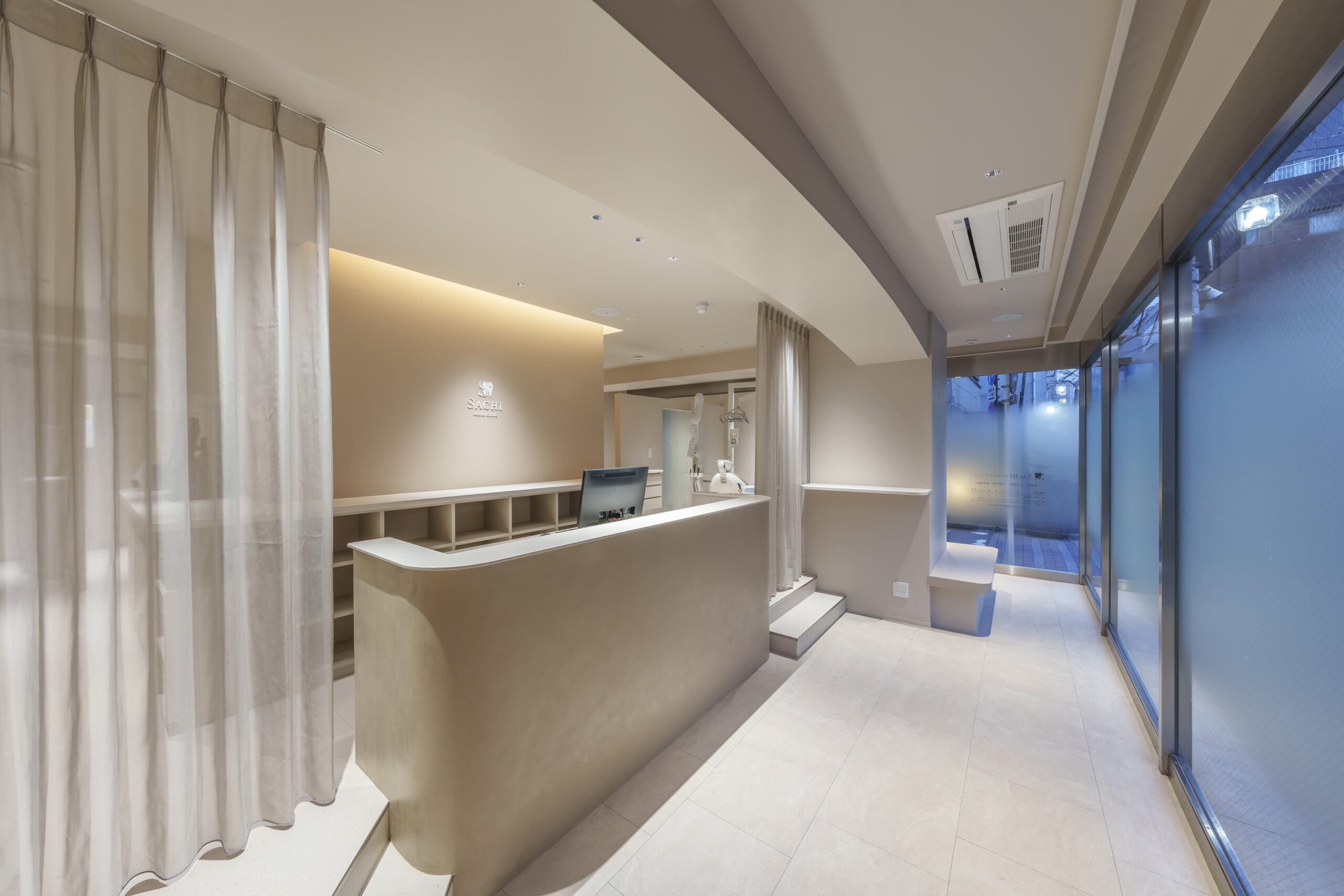Whitening
Publication Date:
Last Updated:
Brilliantly white teeth enhance your smile’s charm and boost your confidence. With growing interest in dental aesthetics, more people are seeking whitening treatments each year. At SACHI Dental Clinic in Mita and Shiba Park, we propose optimal whitening plans tailored to each patient’s needs. Our female dentist provides attentive counseling and careful treatment to achieve your ideal white teeth. This page explains in detail the types, effects, and costs of whitening treatments available at SACHI Dental Clinic.
What Causes Teeth to Yellow?

Teeth whitening is a method that uses special agents to whiten teeth without drilling. This treatment is recommended for those concerned about yellowing teeth or wanting to smile with more confidence.
The following are common causes of tooth yellowing:
- Aging: Teeth gradually yellow as we get older.
- Food and drink stains: Deeply colored beverages like coffee, tea, and red wine can leave stains on tooth surfaces.
- Smoking: Tar and nicotine in tobacco cause tooth yellowing.
- Genetics: Some people naturally have yellowish teeth.
Whitening treatments use special agents to restore beauty and whiteness to teeth yellowed by these factors.
Whitening Treatment Menu
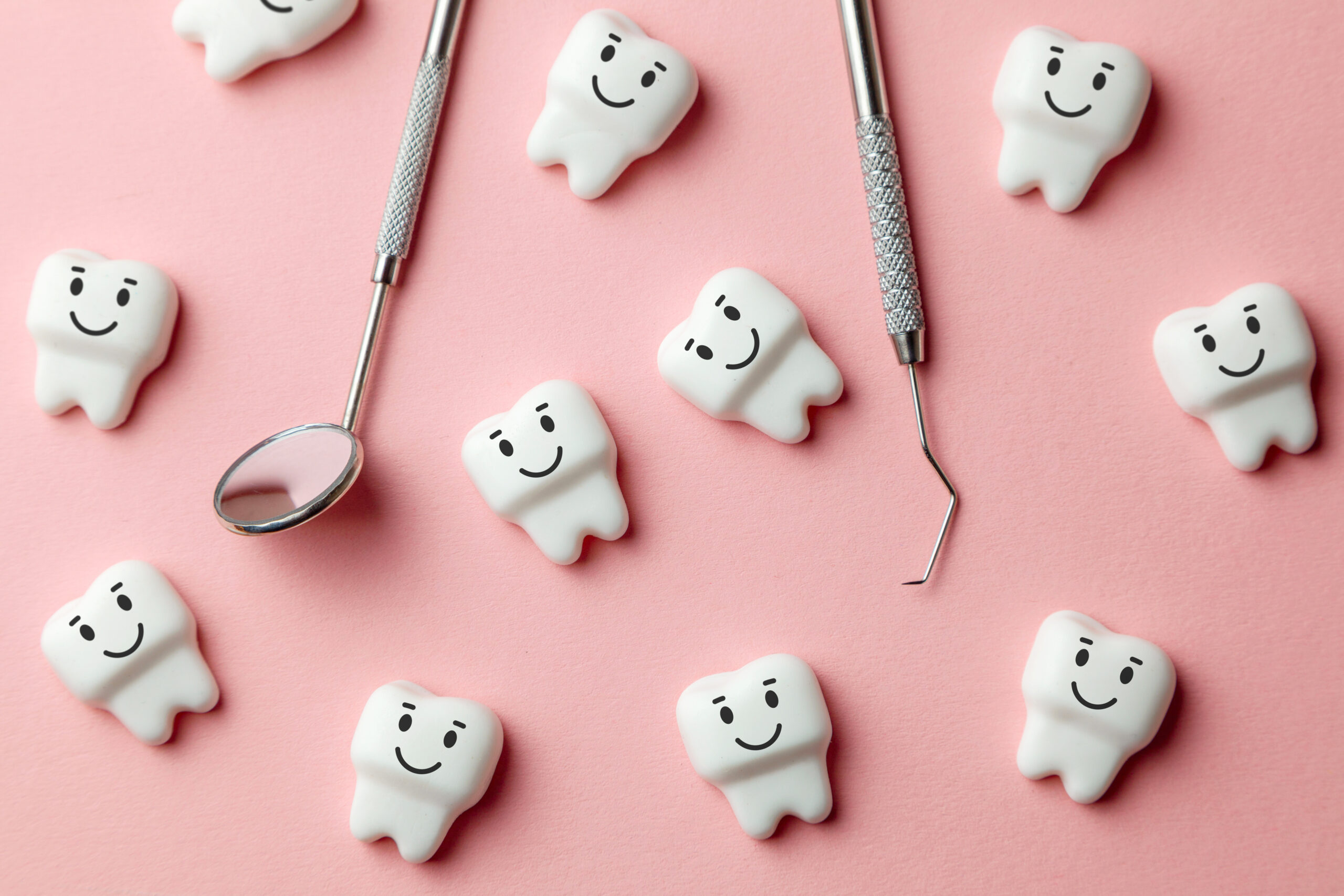
Let us explain in detail each whitening treatment option available at SACHI Dental Clinic.
[Dual Whitening] for those Wanting Quick Results
Dual whitening combines in-office whitening at our clinic with home whitening treatment. By combining the benefits of both methods, you can expect better results and longer-lasting effects than using either method alone.
- Advantages:
- The main advantage is achieving quick results from office whitening while maintaining the whiteness longer through home treatment.
- Combining both methods allows the whitening agent to penetrate deeper, resulting in more uniform whitening than single treatments.
- Disadvantages:
- Costs tend to be higher than other methods as it includes both office and home whitening expenses.
- There is a possibility of tooth sensitivity due to the use of high-concentration agents.
- Recommended for:
- Those who need whiter teeth quickly for weddings, photo shoots, or important events
- Those who want maximum whitening effects with long-lasting results
[Office Whitening] Professional Treatment at our Dental Clinic
Office whitening is performed at our clinic by dentists or dental hygienists. Using high-concentration whitening agents and specialized equipment, results are typically visible after just one treatment.
- Advantages:
- Treatment by professionals ensures safety and reliability.
- Recommended for those with limited time as results are visible after one session.
- We use Beyond Whitening at our clinic.
- Disadvantages:
- There is a possibility of tooth sensitivity due to the use of high-concentration agents.
- May be more expensive compared to home whitening.
- Recommended for:
- Those who want immediate whitening results
- Those who prefer not to handle whitening treatments themselves
- Those seeking safe and reliable whitening treatment
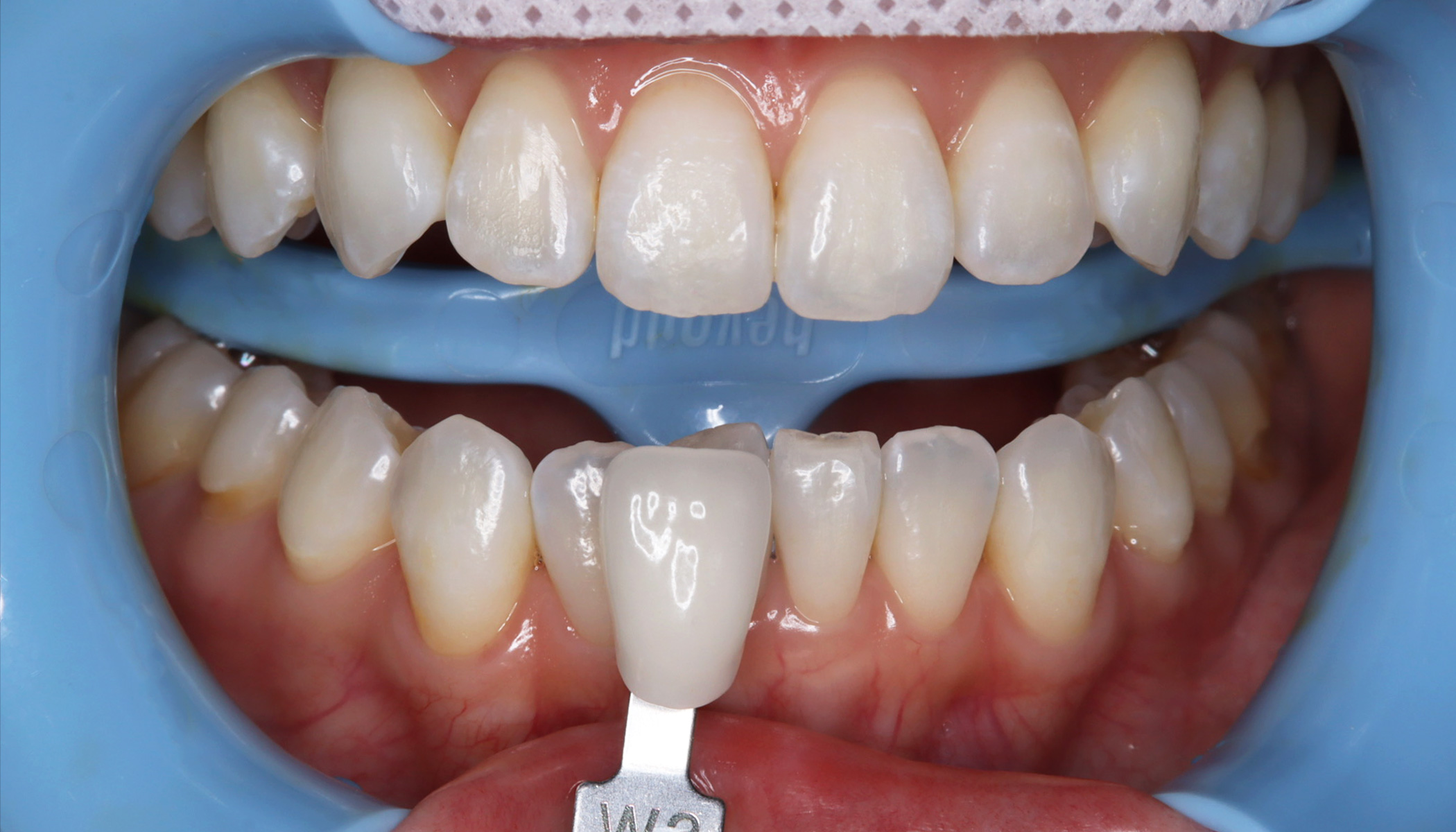
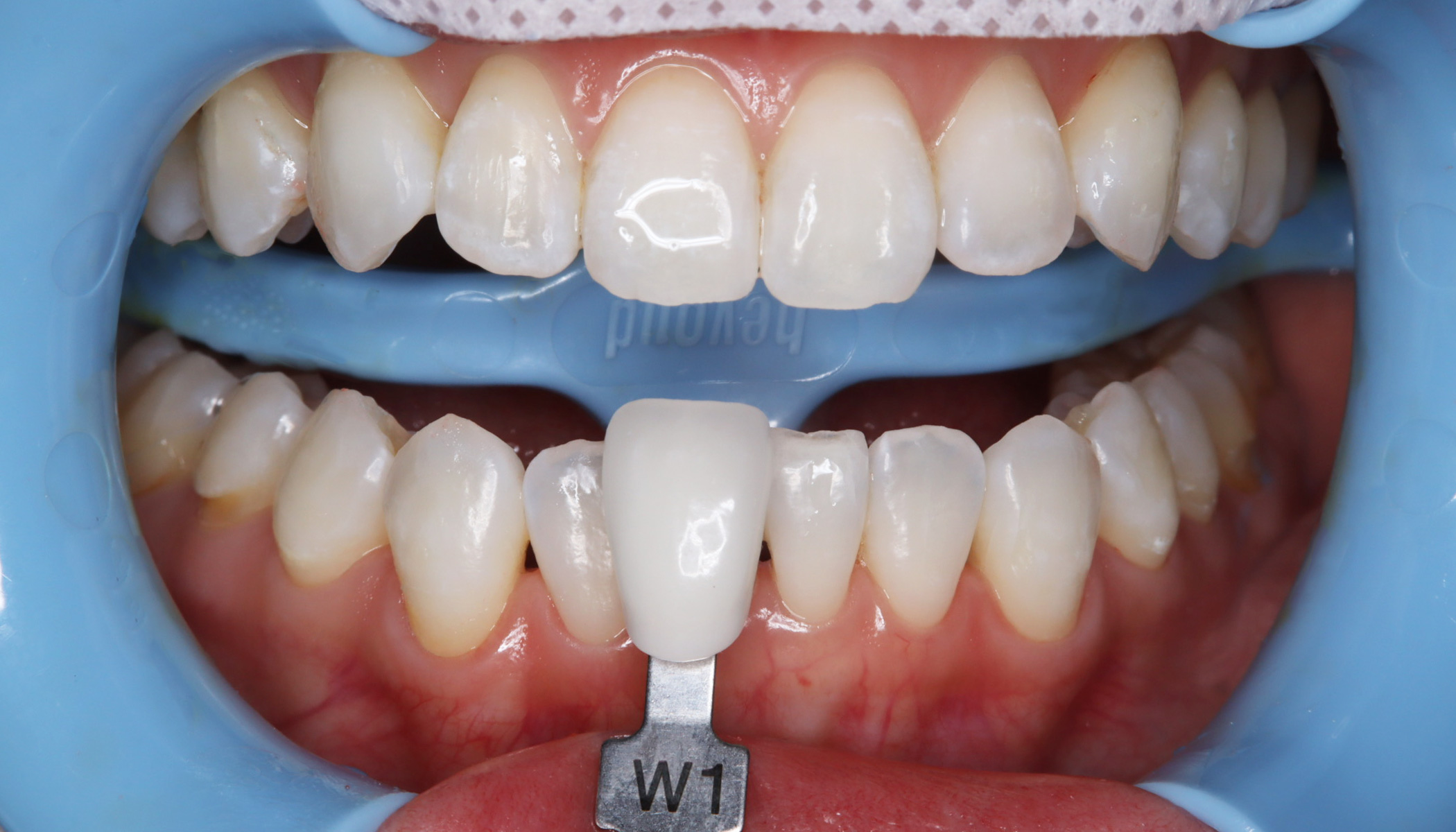
*Actual case
*Results may vary by individual
[Home Whitening] Convenient Treatment at your Own Pace
Home whitening involves using custom-made mouth trays filled with whitening gel at home. This method is recommended for busy individuals as you can whiten your teeth at your own pace.
- Advantages:
- Fewer clinic visits required and treatment can be done at your preferred time.
- More cost-effective compared to office whitening.
- Lower risk of tooth sensitivity due to lower concentration agents.
- Disadvantages:
- Takes longer to see results.
- Requires daily commitment to wear mouth trays for specified duration.
- Recommended for:
- Busy professionals or parents who find it difficult to visit the clinic regularly
- Those seeking a more affordable whitening option
- Those who prefer to whiten their teeth gradually at their own pace
Walking Bleach – for Discolored Non-Vital Teeth
Walking bleach is a whitening method for discolored teeth that have undergone root canal treatment (non-vital teeth). Since regular whitening is less effective on such teeth, walking bleach works by applying the agent from inside the tooth.
- Advantages:
- Can whiten non-vital teeth effectively.
- Minimizes tooth reduction as no crown is needed.
- Disadvantages:
- Requires multiple clinic visits.
- Results vary by individual and may not achieve desired whiteness.
- Recommended for:
- Those concerned about discoloration in root-treated teeth
- Those who want to whiten teeth while minimizing tooth reduction
Whitening Treatment Process
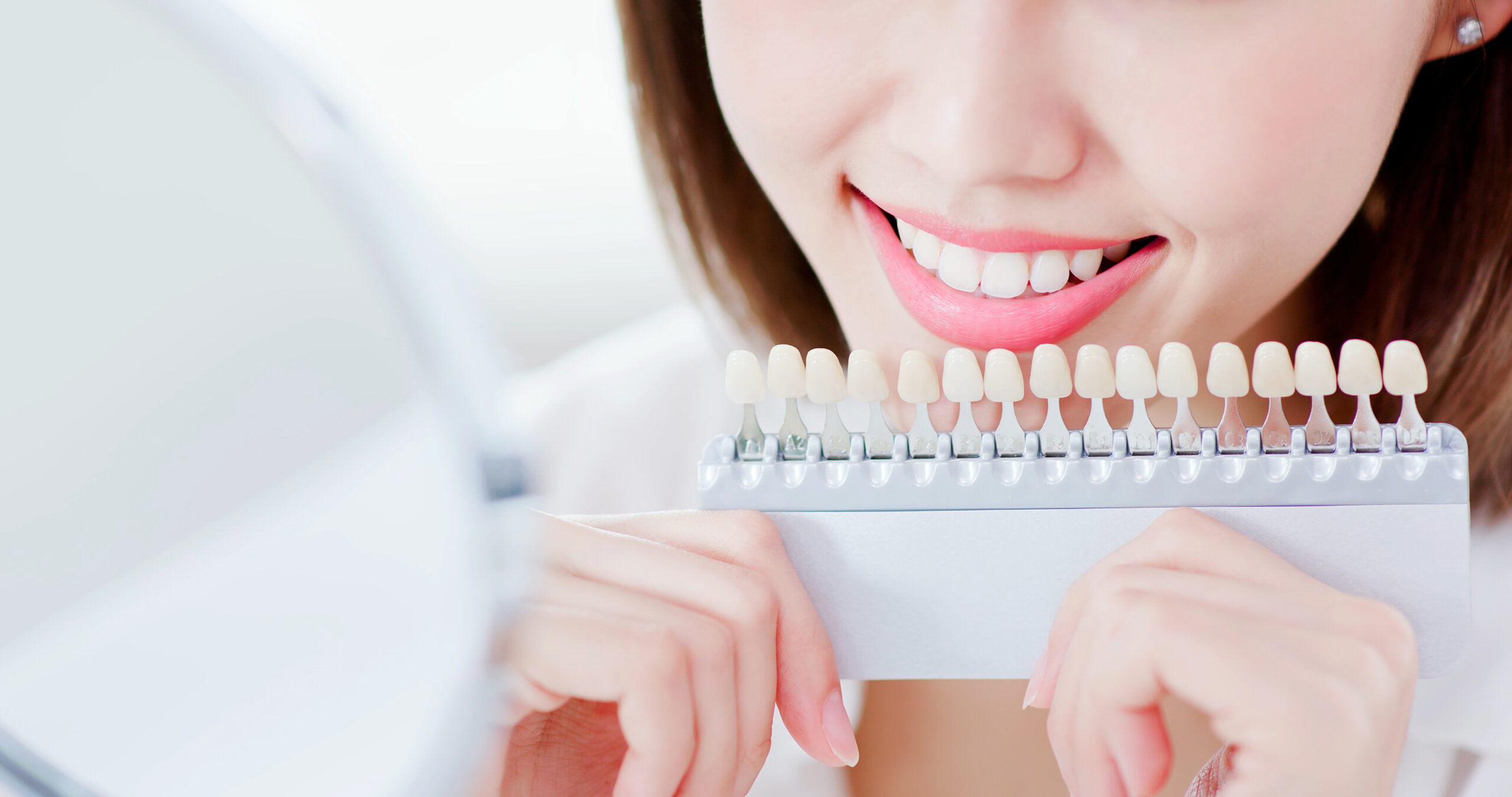
① Examination Diagnosis – Proposing the Optimal Whitening Plan
First, we carefully examine your oral condition to determine if whitening is appropriate. We check for cavities, periodontal disease, and nerve condition to ensure safe treatment.
As shown in the photo above, we use a shade guide to assess your current tooth color. We discuss your desired level of whiteness and determine the most suitable whitening method. Based on your oral condition and preferences, we’ll help you choose between office whitening, home whitening, dual whitening, or walking bleach, and establish a treatment schedule.
Please inform us in advance if you need results for a specific event like a wedding, photo shoot, or other occasions. Early consultation allows us to better plan treatment to meet your timeline, as last-minute requests may not be accommodatable.
② Pre-whitening Preparation – Essential Steps for Maximum Effectiveness
Proper preparation is crucial for optimal whitening results. We recommend Professional Mechanical Tooth Cleaning (PMTC) before whitening treatment.
What is PMTC?
PMTC is thorough tooth surface cleaning performed by dentists or dental hygienists using specialized equipment. By removing plaque, stains, and biofilm (bacterial colonies), it helps whitening agents penetrate better for enhanced results. PMTC is also effective in preventing cavities and gum disease.
③ Whitening Treatment – Safe Procedures with Attention to Comfort
- Office Whitening Procedure:
The treatment takes about one hour. We begin by photographing your teeth with a shade guide to document the initial color. We then prepare by protecting your lips and gums with resin barriers. Once ready, we apply Beyond Whitening gel to your teeth. This system mixes the gel in the syringe before each treatment, ensuring fresh agent application. After the prescribed time, we remove the gel. (This process is repeated 2-3 times.) Finally, we photograph your teeth with the shade guide again to document the color change. - Home Whitening Instructions:
We first create your custom mouth trays (typically ready within a week of taking impressions). Once complete, we’ll explain the home use procedure. After thorough brushing and flossing, apply the appropriate amount of whitening gel to the trays and wear them for 2-3 hours daily (duration varies by gel concentration) for typically two weeks. The trays feature reservoirs to hold the gel effectively and make application easier. If gel overflows, remove it with a toothbrush or cotton swab to prevent irritation to lips, gums, or cheeks. After wearing, remove trays, rinse your mouth, and clean both teeth and trays thoroughly. Treatment may be adjusted based on sensitivity or individual conditions. - Walking Bleach Procedure:
We first thoroughly examine the target tooth, including X-rays to verify proper root treatment and absence of periapical lesions. Gaps in root filling or presence of lesions could lead to complications or tooth loss, requiring treatment before whitening. Walking bleach involves placing medication inside the tooth and replacing it several times for gradual whitening. Usually requires 2-3 sessions, though results vary. Chemical reactions may cause pressure and discomfort. If temporary filling dislodges, rinse thoroughly and contact us immediately.
④ Regular Check-ups and Touch-ups – Maintaining your White Smile
Whitening effects are not permanent and will gradually reverse over time. Regular maintenance is key to maintaining whiteness.
We recommend check-ups every 3-6 months. During these visits, we examine your oral condition and perform cleaning as needed. Touch-up treatments can effectively address any color regression.
Frequently Asked Questions (FAQ)

- Is teeth whitening safe?
- Yes, teeth whitening is safe when performed properly under dental supervision. We thoroughly check your oral condition before treatment for your safety.
- Is teeth whitening painful?
- Some patients may experience temporary sensitivity during treatment. While sensitivity levels vary by individual, it’s usually temporary. At SACHI Dental Clinic, we prioritize your comfort during treatment.
- How long does the effect of whitening last?
- Results typically last 3-6 months, though duration varies by individual. Regular maintenance (cleaning and touch-ups) helps extend the effects.
- How much does teeth whitening cost?
- Costs vary depending on the chosen treatment course and number of sessions. Please visit our website or call us for detailed pricing information.
- Are there cases where whitening isn’t possible?
- Yes, whitening may not be suitable in the following cases:
-
- Active cavities or severe periodontal disease
- Pregnancy or nursing
- Under 18 years of age
- Acatalasemia
- Photosensitivity, etc.
- How do I use home whitening?
- Home whitening uses custom-made mouth trays with gel for at-home treatment. We first take impressions to create your trays, which are usually ready in about a week. After thoroughly cleaning your teeth with brushing and flossing at home, insert the gel-filled trays. Wear them for 2-3 hours daily (time varies by concentration) for two weeks.
- Are there dietary restrictions?
- We recommend avoiding deeply colored foods and beverages (coffee, tea, red wine) and smoking immediately after whitening treatment.
View Other Treatment Options
Treatment Menu
Types of Ceramic Treatments and how to Choose
Treatment Menu
Bite Alignment Treatment
Treatment Menu
Wisdom Teeth
Treatment Menu
Pediatric Dentistry
Treatment Menu
Orthodontics Invisalign
Treatment Menu
Dental Check-ups and Preventive Dentistry
Treatment Menu
Root Canal Treatment
Treatment Menu
Periodontal Disease Treatment
Treatment Menu
Cosmetic Dentistry
